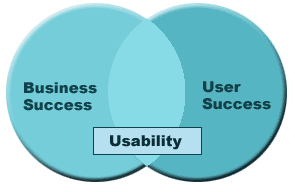Usability is not and should not be an abstraction. It's about actually achieving a measurable good and making a difference.
A product is usable when the system provides value for both its users and for the business that provides the product. We achieve that by understanding the user needs and creating a design that is efficient, satisfying, and helps the users avoid problems. The success of the users then enables the success of those who developed the technology. They pay for the product. They recommend the product. They upgrade the product.
 In contrast, without making an effort to create usable systems, we take a gigantic risk of failing to meet our goals. Not doing usability usually means bad usability. Not doing design means bad design. Without usability, the system is extremely likely to fail. People can't do what they need. Or they can, but it's difficult and frustrating. People don't purchase the product. They don't say good things about it. They don't make repeat purchases. In order to fix a product that's so far from what people want, you have to go through the whole design and development process again.
In contrast, without making an effort to create usable systems, we take a gigantic risk of failing to meet our goals. Not doing usability usually means bad usability. Not doing design means bad design. Without usability, the system is extremely likely to fail. People can't do what they need. Or they can, but it's difficult and frustrating. People don't purchase the product. They don't say good things about it. They don't make repeat purchases. In order to fix a product that's so far from what people want, you have to go through the whole design and development process again.
Usability is Good Business
In business, usability is about your customers, and just as good business has always been about satisfying your customers, it still is. When you give a technology to your customers or communicate with them through a technology, such as a website, you've introduced additional complexity to your customer relationship, and you need to focus on usability to keep that relationship running smoothly. Satisfied customers are loyal customers. They bring repeat business. They recommend you to others. The success of your customers is your success.
Be Practical and Cost-sensitive
Usability is not about spending lots of money to achieve some romantic ideal of perfection. We don't have to be perfect. In fact, it's impossible to be perfect. We're trying to achieve practical solutions that make people's lives better. If we run out of money, we haven't helped anybody.
We need to carefully choose our design and evaluation methods to be cost-effective. What's the lowest-cost approach that will produce the most valuable information for improving a design, with a high degree of confidence? This cost-balancing approach is often called discount usability. But in traditional business terms this is simply a return-on-investment or ROI analysis.
>> next essay